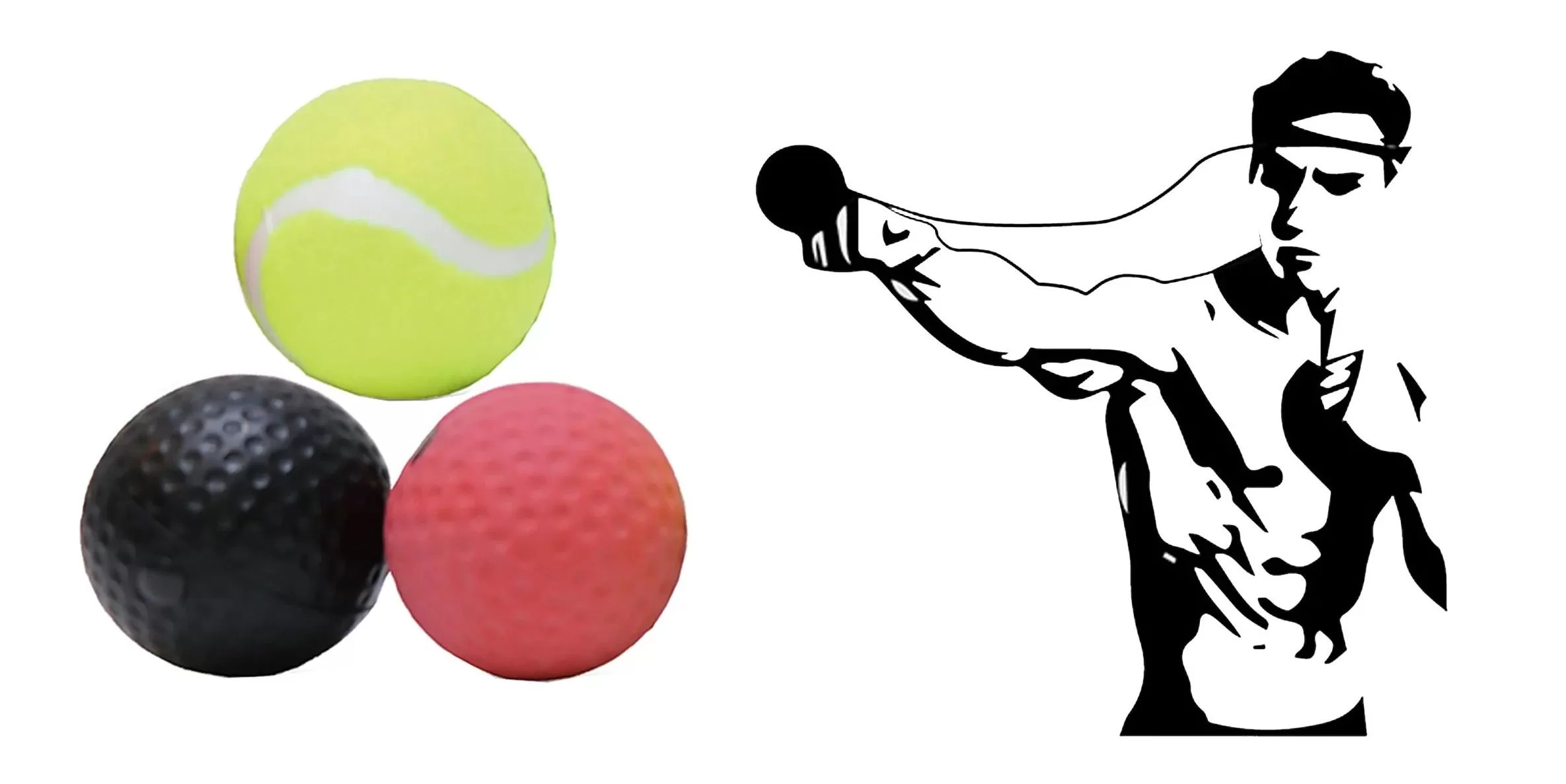Polyurethane boxing balls are indispensable props in modern boxing training. Compared to traditional sandbags, polyurethane boxing balls not only provide a more comprehensive training effect but also have more advantages. In boxing training, the use of polyurethane boxing balls can help boxers improve reaction time, hand-eye coordination, and striking accuracy, as well as build stamina and explosive power. In this article, we will delve into the role and advantages of polyurethane boxing balls in boxing training and how to use them properly to improve your boxing skills.
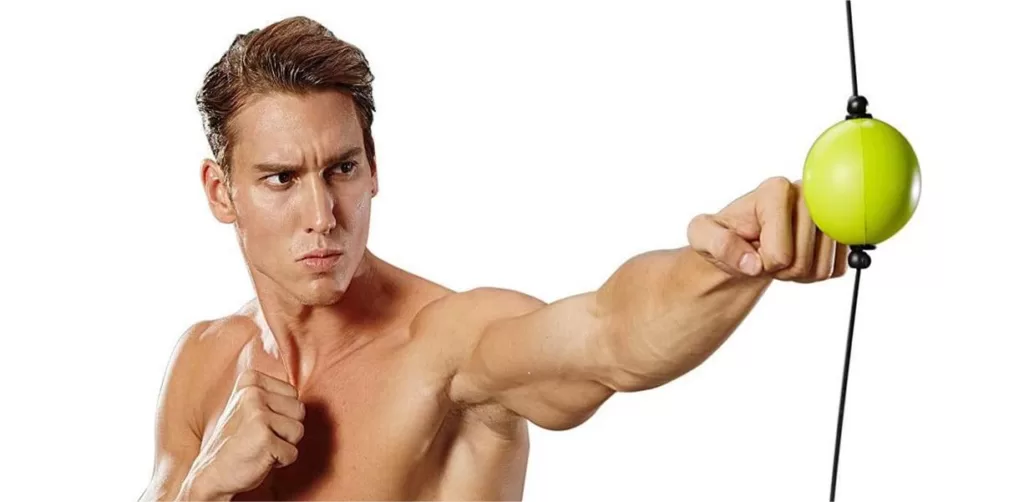
The History of Boxing Training Balls
Boxing training balls date back to the late 19th century when they were called “speedballs” or “leather balls”. These balls were made of leather, filled with feathers or cotton, and suspended from ropes or chains. Boxers could use these balls to practice speed, coordination, and accuracy.
In the early 1900s, boxing training balls gradually began to be made of rubber as rubber technology advanced, which made the balls more flexible, more durable, and easier to control.
As the technology evolved, so did the design of boxing balls, and in the late 1960s, there was a ball called the “double ball,” which consisted of two balls that were connected together by springs. This design allowed boxers to practice attacking and defending techniques at different angles and speeds.
In the early 21st century, electronic technology was used in the manufacture of boxing training balls. Electronic training balls can record the speed, force, and accuracy of a boxer’s strikes and provide real-time feedback to help boxers improve their training results.
In addition to electronic training balls, virtual reality technology also began to be used in boxing training. Virtual reality training balls can present boxing scenes on a wall through projection technology, allowing boxers to train in a virtual environment to improve their reaction speed and decision-making ability.
Qu'est-ce qu'un ballon de boxe en polyuréthane ?
Polyurethane boxing balls are a type of boxing training ball made using polyurethane material. Polyurethane is a polymer material that is very flexible and abrasion-resistant, which is why it is widely used to make high-quality boxing balls. Compared to traditional leather or rubber boxing balls, polyurethane boxing balls have better durability and elasticity. They are able to withstand higher impact and pressure and also have a longer service life.
Urethane boxing balls are a high-quality, durable, flexible, safe, and comfortable boxing training tool that is gaining popularity among boxers and trainers.
Avantages
The advantages of polyurethane boxing balls over traditional leather or rubber boxing balls are more obvious:
- Better durability: Polyurethane is a high-strength material with very good wear resistance and durability. Compared to leather or rubber boxing balls, polyurethane boxing balls can better resist the wear and tear of time and use and last longer.
- Better elasticity: Polyurethane material has very good elasticity and rebound performance, so the boxing balls have better elasticity and bounce, which can better simulate the real boxing match scenario.
- Reduce hand injuries: Polyurethane boxing balls usually have a smooth surface, without the grainy feel of a leather ball surface. This design makes the ball softer and more comfortable when it comes in contact with the boxer’s hand, reducing the pressure and friction on the hand, thus reducing the risk of a hand injury. Of course, there are also tennis balls used as boxing balls for training, only need to wear a pair of gloves to avoid such problems.
- Easy to clean: Compared to leather balls, which require regular maintenance and care, polyurethane boxing balls are usually easier to clean and maintain, and can be cleaned simply with detergent and water.
Classification
Polyurethane boxing balls can be classified according to different characteristics and uses, and the following are some common ways to classify them:
According to Size
Polyurethane boxing balls are usually available in different sizes, which are usually determined by the diameter of the ball, common sizes include small, medium, and large. Different sizes are suitable for boxers of different training purposes and skill levels.
- With a diameter of about 6 inches (15 cm) and a weight of about 1 pound (0.45 kg), the small size is suitable for beginners or children. Because of the smaller size of the small boxing ball, boxers need more precision and accuracy when hitting the ball, so they can train their coordination and reaction speed.
- The medium size is about 8 inches (20 cm) in diameter and weighs about 3 pounds (1.36 kg), making it suitable for intermediate and experienced boxers. Medium boxing balls are medium in size, neither too heavy nor too light, and can improve a boxer’s speed and power.
- Large is about 10 inches (25 cm) in diameter weighs about 5 pounds (2.27 kg) or more, and is suitable for advanced and professional boxers. The heavier weight of the large boxing ball requires more strength and stamina from the boxer and can improve the boxer’s power and explosive strength.
According to Weight
Polyurethane boxing balls are also usually available in different weights, ranging from 1 pound for lightweights to 150 pounds for heavyweights. Different weights are suitable for boxers of different training purposes and skill levels.
- Lightweight polyurethane boxing balls usually weigh between 1-3 pounds and are suitable for beginners and children. Lightweight boxing balls are lighter, more flexible for boxers to use, and good for practicing boxer speed and coordination.
- Mid-weight polyurethane boxing balls usually weigh between 3-5 pounds and are suitable for intermediate and experienced boxers. Medium-weight boxing balls have some inertia and require better strength and reaction time for boxers to improve their power and explosiveness.
- Heavyweight polyurethane boxing balls usually weigh between 5-150 pounds and are suitable for advanced and professional boxers. Heavyweight boxing balls require boxers to have more strength and stamina, which can improve a boxer’s power and explosiveness, as well as help practice a boxer’s stability and core strength.
According to Use
Polyurethane boxing balls can be classified according to different uses, such as target balls, speed balls, and two-way balls. Different uses and designs can be used to meet different training needs and skill levels of boxers.
According to Material
There are also different options for the material of polyurethane boxing balls, such as ordinary polyurethane and polyurethane foam. Different materials can affect the ball’s elasticity, weight, durability, and other characteristics.
In conclusion, polyurethane boxing balls can be classified according to different characteristics and uses, and boxers and coaches can choose the right polyurethane boxing ball for their needs and training goals.
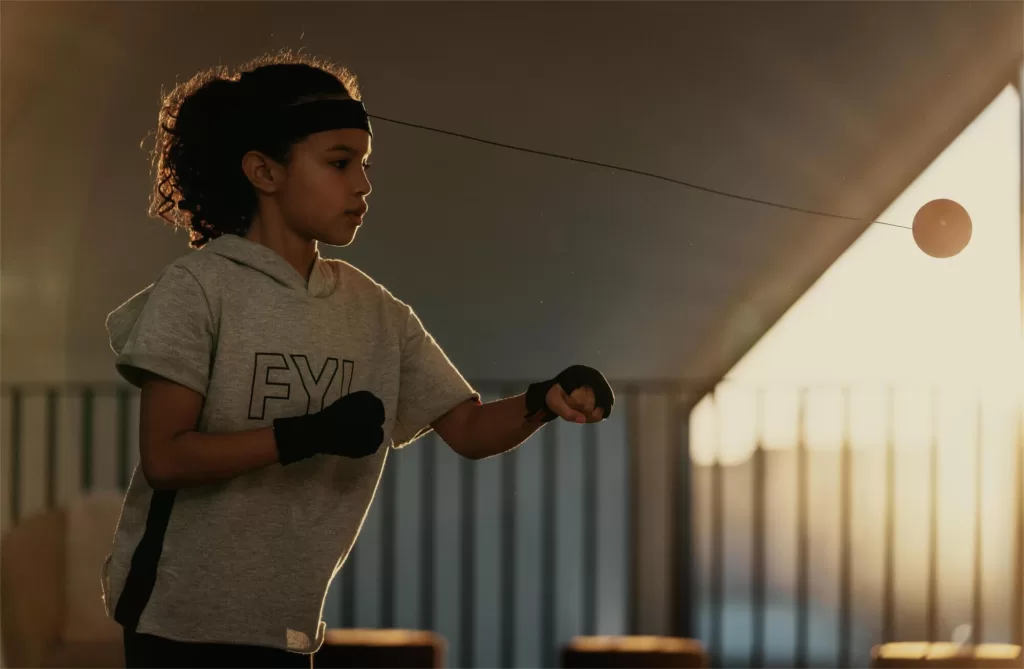
How to Choose the Right Polyurethane Boxing Ball for You
Choosing the right polyurethane boxing ball for you requires consideration of several factors, such as skill level, training goals, weight, age, and so on.
- Skill level: Beginners should usually choose a lightweight polyurethane boxing ball so that they can gradually hone their skills and improve their reaction time and coordination. Intermediate and experienced boxers can choose medium-weight polyurethane boxing balls to improve strength and explosive power. Advanced and professional boxers can choose heavyweight polyurethane boxing balls to improve stability and core strength.
- Training goals: If your training goal is to improve speed and coordination, you can choose a small polyurethane boxing ball. If your training goal is to improve strength and explosive power, you can choose a medium or heavyweight polyurethane boxing ball.
- Weight: Usually, the heavier a boxer is, the heavier the boxing ball will be. If you are a lighter-weight boxer, you can choose a lightweight urethane ball and vice versa.
- Age: Age is also an important factor in choosing a polyurethane boxing ball. If you are a child or young adult, you should choose a lightweight urethane boxing ball to avoid injury. If you are an older boxer, you can choose a medium or heavyweight urethane boxing ball to improve stability and core strength.
- Affordability: The price of polyurethane boxing balls varies depending on factors such as brand, size, and weight. You can choose the right urethane boxing ball for you based on your financial ability.
The Benefits of Using Polyurethane Boxing Ball
Proper exercise can bring benefits, and so can boxing training.
- Good fitness effect: Boxing is a high-intensity aerobic exercise that can effectively burn body energy, improve cardiorespiratory function, and enhance muscle strength and endurance.
- Reduce stress: boxing is a sport that can release stress, Hitting the boxing ball can release negative emotions and anxiety in the body and relieve stress.
- Improve coordination: The use of polyurethane boxing balls needs to control their strength and rhythm, which helps to improve body coordination and reaction speed.
- Convenient and practical: Using polyurethane boxing balls at home does not require much space and equipment, only a boxing ball and a mounting bracket can be trained. And now popular headwear boxing training ball, in the purchase of the configuration of a rope and a headband, in many places can be used, very convenient.
- Improve self-confidence: Through continuous training and improvement, you can improve your boxing skills and physical fitness, thus increasing self-confidence and self-esteem.
Of course, the benefits of boxing training are much more than that, and you will appreciate it when you keep practicing for a while.
Comparison with Other Boxing Training Equipment
Compared to other boxing training equipment, the use of polyurethane boxing balls has the following advantages and disadvantages:
Avantages des balles de boxe en polyuréthane
Pressure reduction: Compared to sandbags, polyurethane boxing balls are lighter and easier for beginners to grasp and control.
Low noise: Compared with sandbags, polyurethane boxing balls make less noise, suitable for use at home.
Easy to carry: Compared with sandbags, polyurethane boxing balls are small light, and easy to carry, so you can train anywhere, anytime.
Suitable for a variety of training: In addition to being used to practice boxing skills, polyurethane boxing balls can also be used to practice kicks, knees, elbow strikes, and other skills, with more applicability.
Disadvantages of Polyurethane Boxing Balls
Need to install brackets: Unlike sandbags, polyurethane boxing balls need to be installed with brackets and require the appropriate space to be reserved at home.
Not suitable for high-intensity training: Due to its lightness, the polyurethane boxing ball is not suitable for high-intensity boxing training, so it is suitable for beginners and light training.
Not stable enough: Compared with sandbags, polyurethane boxing balls are not stable enough, easy to shake, and require skill and experience to control.
Overall, the polyurethane boxing ball is a convenient and practical boxing training equipment for a wide range of training, suitable for beginners and light training, but for high-intensity training and professional players, other more specialized training equipment may be required.
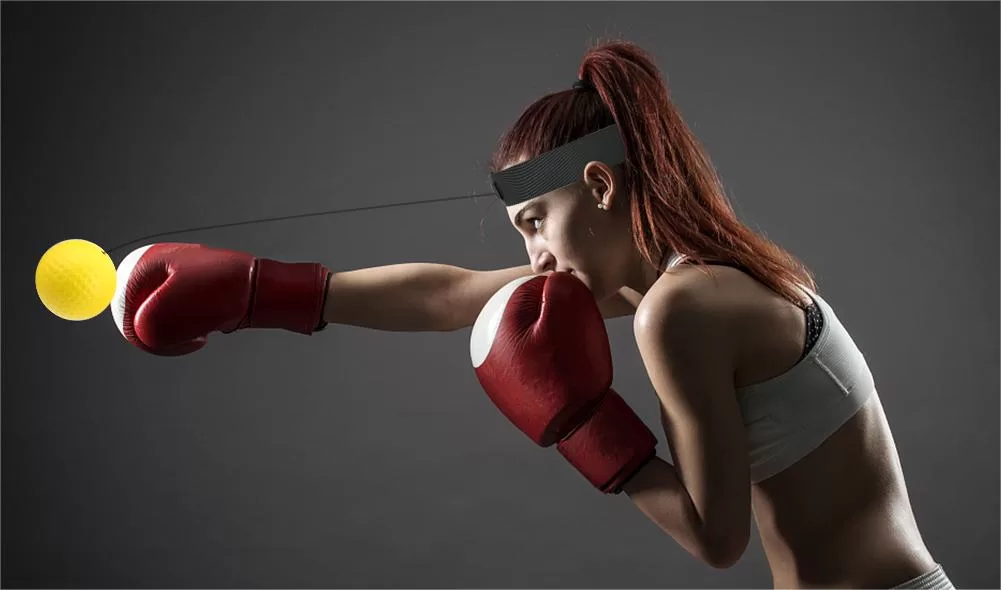
Entretien et soins
In order to ensure the long-term service life and effectiveness of the use of polyurethane boxing balls, the following maintenance and care are required:
- Regular cleaning: After using the boxing ball for a period of time, the surface will be covered with sweat, dust, and other dirt, You need to clean it with a damp cloth or sponge to avoid dirt damage to the surface.
- Avoid sunlight exposure: Long-term exposure to sunlight will cause the surface of the polyurethane boxing ball to harden, so you need to avoid direct sunlight when stored.
- Avoid high-temperature environment: The high-temperature environment will make the polyurethane boxing ball soft or deform, so storage needs to avoid high-temperature environment.
- Regularly check the mounting brackets: When using polyurethane boxing balls need to use brackets, Regularly check the stability of the brackets to ensure that the boxing balls do not fall or shake.
The maintenance and care of the boxing ball need to be carried out regularly so as to prolong its life and maintain its effectiveness in use.
Training Program and Tips
Develop a training plan and practice training techniques that can achieve unexpected training results.
- Warm-up: Before training with polyurethane boxing balls, you need to perform warm-up activities, such as jumping rope, jogging, and stretching to prevent sports injuries.
- Technique training: When using polyurethane boxing balls for technique training, you can choose different movements such as straight punch, hook, uppercut, downward hook, straight knee strike, etc., according to your needs and skill level. It is recommended to start training with the basic skills and gradually increase the difficulty.
- Body coordination training: When training with polyurethane boxing balls, you need to pay attention to body coordination, such as waist and leg coordination, body weight control, and so on. You can train by changing hands left and right, moving up and down, etc. to improve body coordination.
- Timed training: When training with polyurethane boxing balls, you can set a time limit, such as 1 minute or 2 minutes, for timed training. This can help improve endurance and reflexes.
- Rest time: You need to rest at the right time during training to avoid overworking your body. It is recommended to take short breaks, such as 30 seconds or 1 minute, in order for the body to fully recover.
Overall, polyurethane boxing ball training programs and techniques need to be adjusted and improved according to your actual situation, gradually increasing the difficulty and effectiveness of training. At the same time, you also need to pay attention to the safety and health of your body to avoid unnecessary injuries.
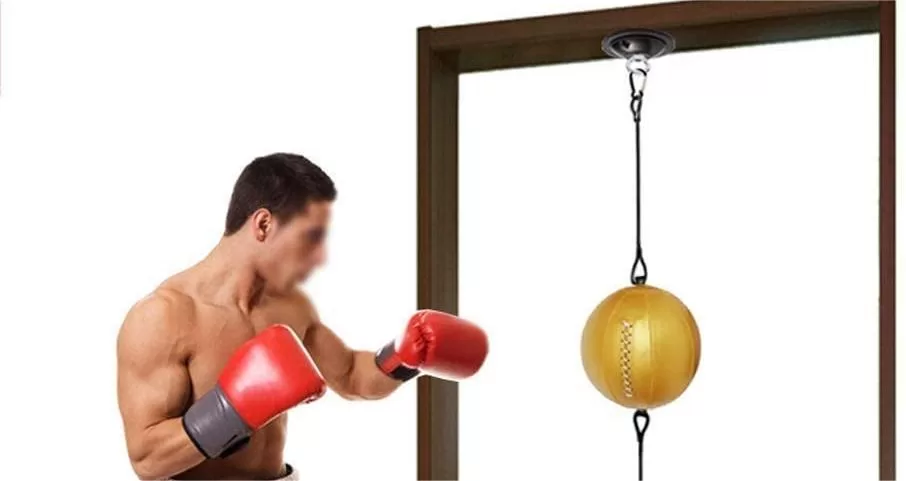
Notes and Safety Tips
This is because polyurethane boxing balls are more elastic than ordinary boxing balls. In order to avoid body damage, pay attention to the following points when training:
- Warm-up: Before training with polyurethane boxing balls, warm-up activities, such as jumping rope, jogging, and stretching are required to prevent sports injuries.
- Protective equipment: When training, you need to wear appropriate protective equipment, such as gloves, helmets, and chest protectors, to protect the body from injury.
- Control strength: You need to control your strength, do not overexert yourself to avoid damage to the body.
- Space restrictions: You need to pay attention to the space restrictions around you to avoid the boxing ball hitting the wall or other objects to avoid unnecessary damage.
- Safe location: You need to choose a safe location to ensure that the boxing ball will not fall or shake to avoid causing safety hazards.
- Avoid sharing: Polyurethane boxing balls are personal items, it is recommended not to share them with others to avoid problems such as cross-infection or inappropriate use.
- Regular inspection: You need to regularly check the boxing ball brackets and connections are secure to ensure the safety of use.
In general, the use of polyurethane boxing balls requires attention to the above matters and safety tips to ensure the safety and health of the body, but also need to be adjusted and improved according to their actual situation, and gradually improve the difficulty and effectiveness of training.
Conclusion
In our exploration, we’ve delved into the multifaceted world of polyurethane boxing balls, shedding light on their classifications, distinct advantages, and their pivotal role in enhancing boxing training. By understanding their features and integrating them into a structured training regimen, boxers can significantly elevate their skills and performance.

